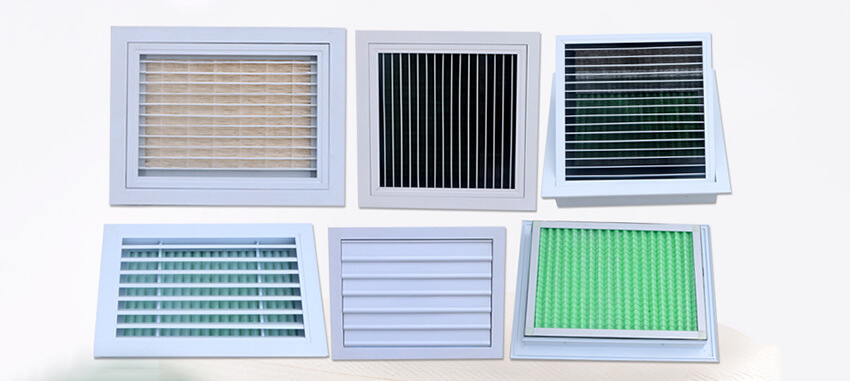Indoor air quality (IAQ) is a fundamental aspect of any indoor environment, whether it’s a home, office, healthcare facility, or commercial space. The quality of the air we breathe indoors directly impacts our health, comfort, and overall well-being. IAQ is not a matter to be taken lightly, as it can have significant implications for occupants.
In the pursuit of enhancing IAQ, one often overlooked aspect is the role of HVAC diffusers. These seemingly simple components play a pivotal role in how conditioned air is distributed within a space. Selecting the right diffusers can be a game-changer in the quest for better IAQ.
Understanding the world of diffusers can be complex, with various types, materials, and technologies available. In this article, we’ll delve into the intricate details of how the right diffusers can significantly impact IAQ. We’ll explore the types of diffusers, factors to consider when choosing them, installation best practices, maintenance guidelines, and even advanced technologies that go beyond traditional diffuser functions.
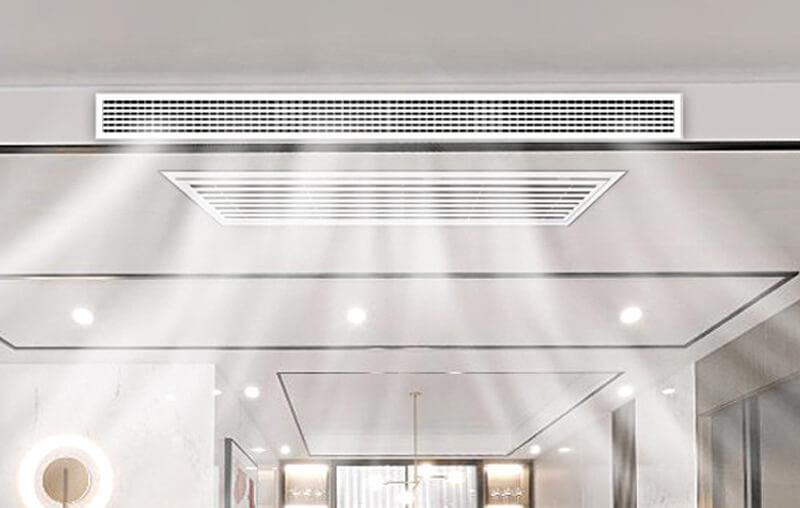
Understanding Indoor Air Quality (IAQ)
Indoor air quality (IAQ) refers to the condition of the air within enclosed spaces, including homes, offices, schools, and commercial buildings. IAQ encompasses various factors that collectively determine the healthiness of the air that occupants breathe while indoors.
The Significance of IAQ
- Health Implications: The quality of indoor air has a profound impact on human health. Poor IAQ can lead to a wide range of health issues, from respiratory problems and allergies to more severe conditions like asthma.
- Occupant Comfort: IAQ also directly influences occupant comfort and well-being. An indoor environment with clean, fresh air contributes to a sense of comfort, productivity, and overall satisfaction.
- Energy Efficiency: The management of IAQ can have implications for energy efficiency. Effective ventilation and IAQ control can reduce the need for excessive heating or cooling, resulting in energy savings.
Common Indoor Air Pollutants
Understanding IAQ involves recognizing and addressing the presence of various indoor air pollutants that can compromise the health and comfort of occupants. These pollutants include:
A. Allergens
- Dust Mites: Microscopic organisms found in dust, carpets, and bedding that can trigger allergies.
- Pollen: Airborne pollen from plants can enter indoor spaces, causing allergic reactions in sensitive individuals.
B. Particulate Matter
- PM2.5 and PM10: Fine particulate matter with diameters of 2.5 and 10 micrometers, respectively, which can penetrate the respiratory system and cause health problems.
C. Volatile Organic Compounds (VOCs)
- Chemical Emissions: VOCs are emitted by various sources like paints, cleaning products, and furnishings. Prolonged exposure can lead to adverse health effects.
D. Pathogens
- Bacteria and Viruses: Pathogens can circulate in indoor air, leading to the spread of illnesses like the common cold, flu, and even more severe infections.
E. Radon
- Radioactive Gas: Radon is a colorless, odorless gas that can seep into buildings from the ground, potentially causing lung cancer when inhaled over time.
Impact of Poor IAQ
A. Health Effects
- Respiratory Issues: Poor IAQ can exacerbate respiratory conditions like asthma and bronchitis.
- Allergies and Sensitivities: Allergens and pollutants in the air can trigger allergies and worsen symptoms in sensitive individuals.
- Infectious Diseases: The presence of pathogens in indoor air can contribute to the transmission of infectious diseases.
B. Reduced Productivity
- Cognitive Function: Poor IAQ can impair cognitive function, leading to decreased focus, memory issues, and reduced productivity.
- Discomfort: Occupants in spaces with subpar IAQ may experience discomfort, fatigue, and decreased motivation.
C. Energy Costs
- Inefficient HVAC Systems: A lack of proper IAQ management can strain HVAC systems, leading to higher energy consumption and increased operational costs.
Understanding the intricacies of IAQ is the first step in recognizing the importance of maintaining clean and healthy indoor air. In the next section, we’ll explore how diffusers can play a pivotal role in enhancing IAQ within indoor spaces.

The Role of Diffusers in IAQ Enhancement
Before delving into the ways diffusers can enhance indoor air quality (IAQ), it’s essential to grasp their fundamental function in HVAC systems. HVAC (Heating, Ventilation, and Air Conditioning) diffusers are components designed to distribute conditioned air within a space in an efficient and controlled manner.
A. Air Distribution
- Even Airflow: Diffusers are engineered to ensure the even distribution of conditioned air throughout a room. This prevents hot or cold spots and contributes to occupant comfort.
- Mixing Air: Diffusers often serve as air mixers, blending supply air with room air to achieve the desired temperature and humidity levels.
B. Air Quality Improvement
- Particulate Removal: Some diffusers incorporate features to help remove airborne particulate matter, such as dust and allergens, contributing to cleaner air.
- Pathogen Control: Certain advanced diffusers are equipped with UV germicidal technology, which can help inactivate pathogens like bacteria and viruses in the air.
Selecting the Right Diffusers for IAQ Enhancement
The choice of diffusers plays a pivotal role in enhancing IAQ. Different diffusers are suitable for various applications, and selecting the right ones is crucial for achieving optimal air quality.
A. Ceiling Diffusers
- Wide Distribution: Ceiling diffusers are commonly used for their ability to distribute air evenly across a room’s entire ceiling, which then circulates down to occupants.
- Ideal for Large Spaces: They are suitable for large open spaces, making them valuable in commercial and industrial settings.
B. Wall-Mounted Diffusers
- Local Control: Wall-mounted diffusers provide localized airflow control, allowing occupants to adjust air direction to their preference.
- Compact Design: They are ideal for smaller spaces and individual comfort control.
C. Floor Diffusers
- Discreet Placement: Floor diffusers are placed at floor level, providing an unobtrusive method of air distribution.
- Low-Turbulence: They create low-turbulence airflow, which can be beneficial for reducing particulate matter in the air.
D. Slot Diffusers
- Architectural Integration: Slot diffusers can be seamlessly integrated into architectural designs, maintaining aesthetics while enhancing IAQ.
- Focused Airflow: They offer focused and adjustable airflow, making them suitable for spaces where specific air direction is required.
E. Jet Diffusers
- High-Velocity Airflow: Jet diffusers provide high-velocity airflow that can effectively distribute air over long distances, making them suitable for large open areas.
- Precision Control: They allow for precise control of air direction, making them valuable in spaces with specific airflow requirements.
Impact on IAQ
The choice of diffusers impacts IAQ in several significant ways:
A. Ventilation and Fresh Air Delivery
- Ventilation Efficiency: Properly selected diffusers enhance ventilation efficiency, ensuring a continuous supply of fresh outdoor air.
- Contaminant Dilution: Efficient ventilation through diffusers dilutes indoor contaminants, reducing their concentration in the air.
B. Pathogen Control
- UV Germicidal Diffusers: UV germicidal diffusers can help inactivate harmful pathogens, contributing to a safer indoor environment.
- Reduced Infection Risk: The use of such diffusers can help reduce the risk of airborne infections in healthcare settings and crowded spaces.
In the next section, we’ll explore the critical factors to consider when choosing diffusers for IAQ enhancement, helping you make informed decisions for your indoor spaces.

Types of Diffusers
Diffusers come in various types, each with unique characteristics and applications. Understanding these different types is crucial for selecting the right diffusers to enhance indoor air quality (IAQ) effectively.
Let’s take a look at a video for reference:
Wide Dispersal for Whole-Room Comfort
Ceiling diffusers are a common choice for delivering conditioned air to spaces with suspended ceilings. They offer benefits such as:
- Even Airflow: Ceiling diffusers are designed to provide even airflow distribution across the entire ceiling, ensuring uniform comfort throughout the room.
- Indirect Cooling: They allow for indirect cooling by introducing conditioned air near the ceiling. This air gradually descends, reducing drafts and improving comfort.
- Noise Reduction: Many ceiling diffusers are designed to minimize noise levels, contributing to a quieter and more comfortable indoor environment.
B. Wall-Mounted Diffusers
Localized Comfort Control
Wall-mounted diffusers are ideal for spaces where individualized airflow control is needed. Key advantages include:
- Local Airflow Adjustment: Occupants can easily adjust the airflow direction using wall-mounted diffusers, allowing them to customize their comfort.
- Compact Design: These diffusers are suitable for smaller spaces, making them an excellent choice for individual offices, bedrooms, or other areas.
Discreet and Low-Turbulence
Floor diffusers are designed to provide conditioned air at floor level, offering the following advantages:
- Discreet Placement: They blend seamlessly with the flooring, maintaining aesthetics while delivering comfort.
- Low-Turbulence Airflow: Floor diffusers create low-turbulence airflow, which can help reduce particulate matter in the air, contributing to better IAQ.
Aesthetic Integration with Precise Control
Slot diffusers are known for their architectural integration and precise control over airflow. Key features include:
- Architectural Integration: Slot diffusers can be seamlessly integrated into architectural designs, maintaining aesthetics while enhancing IAQ.
- Focused and Adjustable Airflow: They offer focused and adjustable airflow, making them suitable for spaces with specific airflow requirements.
High-Velocity Airflow for Large Spaces
Jet diffusers are designed to deliver high-velocity airflow over longer distances. Their benefits include:
- Efficient Distribution: Jet diffusers efficiently distribute air, making them suitable for large, open spaces.
- Precision Control: They allow for precise control of air direction, making them valuable in spaces with specific airflow requirements.
Each type of diffuser has its unique strengths and applications. The choice of diffuser should align with the specific needs and layout of the indoor space to optimize IAQ. In the next section, we will explore the factors to consider when selecting diffusers to achieve the best IAQ outcomes.

Factors to Consider When Choosing Diffusers for IAQ Enhancement
Selecting the right diffusers is a critical step in enhancing indoor air quality (IAQ). Several factors should be taken into account to ensure that the chosen diffusers effectively contribute to cleaner and healthier indoor environments.
A. Airflow Patterns and Distribution
Matching Airflow to Space
- Understanding Airflow Patterns: Different diffusers produce varying airflow patterns, such as radial, directional, or multi-directional. Choose a pattern that suits the layout and purpose of the space.
- Even Air Distribution: The diffuser’s design should ensure even air distribution across the room. This prevents the formation of hot or cold spots, contributing to better IAQ.
B. Material Selection
Avoiding IAQ Compromises
- Non-Offgassing Materials: Choose diffusers made from materials that do not off gas harmful volatile organic compounds (VOCs) into the indoor air. This helps maintain IAQ.
- Antimicrobial Coatings: Some diffusers feature antimicrobial coatings that inhibit the growth of mold, bacteria, and other contaminants, further improving IAQ.
C. Air Exchange Rate
Optimizing Ventilation
- Sufficient Air Changes: Ensure that the chosen diffusers provide sufficient air changes per hour, allowing for efficient ventilation and contaminant removal.
- Ventilation Rate Calculation: Conduct a ventilation rate calculation based on the size and occupancy of the space to determine the required airflow and select diffusers accordingly.
D. Noise Control
Enhancing Comfort and IAQ
- Low Noise Diffusers: Consider diffusers designed for low-noise operation. Excessive noise can lead to occupant discomfort and affect IAQ.
- Noise Reduction Strategies: Implement noise reduction strategies, such as selecting diffusers with built-in silencers or sound-absorbing materials.
E. Compatibility with HVAC System
Seamless Integration
- Compatibility with HVAC System: Ensure that the selected diffusers are compatible with the existing HVAC system to avoid operational issues and maximize IAQ benefits.
- Proper Sizing: Size the diffusers correctly to match the HVAC system’s capacity and ensure efficient air distribution.
F. Advanced Technologies
Going Beyond Traditional Functions
- HEPA Filtration Diffusers: Consider diffusers with built-in HEPA filters to trap airborne particles, including allergens, dust, and fine particulate matter.
- UV Germicidal Diffusers: Explore diffusers equipped with UV germicidal technology, which can help inactivate harmful pathogens in the air, improving IAQ.
G. Energy Efficiency
Balancing IAQ and Energy Consumption
- Efficient Diffusers: Opt for diffusers that promote energy-efficient airflow distribution while maintaining IAQ standards.
- Balanced Design: Choose diffusers that strike a balance between effective air quality enhancement and energy conservation.
By carefully considering these factors when selecting diffusers, you can tailor your HVAC system to provide optimal IAQ while ensuring occupant comfort and energy efficiency. In the next section, we’ll explore the essential aspects of properly positioning and installing diffusers for maximum IAQ benefits.
Positioning and Installation of Diffusers
The effectiveness of diffusers in enhancing indoor air quality (IAQ) is closely tied to their correct positioning and installation. Here, we explore the key considerations to ensure that diffusers contribute optimally to cleaner and healthier indoor environments.
A. Proper Placement for Maximum Impact
Strategic Location Matters
- Consider the Room Layout: Analyze the room’s layout and purpose to determine the optimal placement of diffusers. Ensure that airflow reaches all areas evenly.
- Avoid Obstructions: Place diffusers where they are free from obstructions, such as furniture or partitions, to allow for unimpeded airflow distribution.
- Ceiling vs. Wall vs. Floor: Depending on the type of diffuser (ceiling, wall, or floor), select locations that align with the diffuser’s intended use and coverage area.
B. Ideal Height and Angle
Achieving the Desired Airflow
- Ceiling Diffusers: Position ceiling diffusers at an optimal height to facilitate efficient mixing of supply air with room air. Adjust the angle to minimize drafts.
- Wall-Mounted Diffusers: For wall-mounted diffusers, ensure they are installed at the appropriate height for occupant comfort and adjustability.
- Floor Diffusers: Place floor diffusers strategically to minimize disturbance of settled dust and ensure that conditioned air rises naturally.
C. Professional Installation
Leave it to the Experts
- Hire a Professional: Given the importance of proper diffuser installation, it is advisable to hire a qualified HVAC professional who can assess your space and install the diffusers correctly.
- Balancing and Testing: Professionals will perform air balancing and testing to ensure that diffusers are functioning as intended, delivering the right amount of conditioned air for IAQ.
D. Regular Maintenance
Preserving IAQ Benefits
- Scheduled Inspections: Implement a regular maintenance schedule to inspect diffusers, ensuring they remain free from dust, debris, or obstructions that could compromise IAQ.
- Cleaning and Filter Replacement: Clean diffusers and replace filters as needed to maintain optimal airflow and IAQ benefits.
Proper positioning and installation of diffusers are integral to their effectiveness in enhancing IAQ. By taking these steps, you can maximize the impact of your HVAC system on creating cleaner and healthier indoor environments. In the next section, we’ll explore advanced technologies that go beyond traditional diffuser functions to further improve IAQ.
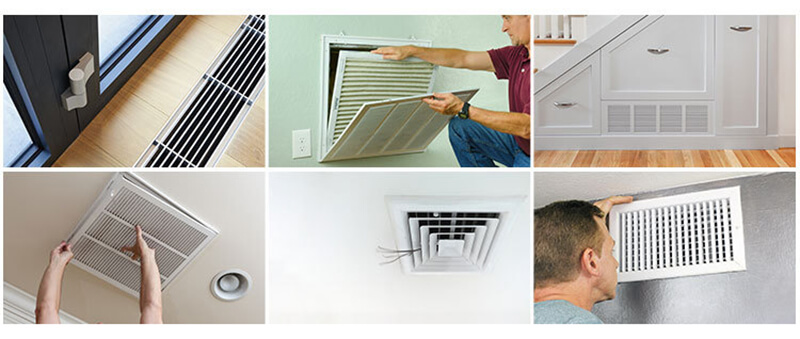
Maintenance and Cleaning
Proper maintenance and cleaning of diffusers are essential steps in ensuring that your HVAC system continues to enhance indoor air quality (IAQ) effectively. In this section, we delve into the key aspects of maintaining and cleaning diffusers for optimal performance.
A. Regular Inspection and Assessment
Scheduled Checks for IAQ
- Establish a Routine: Create a regular maintenance schedule for inspecting diffusers to identify any signs of wear, dust buildup, or performance issues.
- Professional Assessment: Consider enlisting the expertise of an HVAC professional to conduct comprehensive assessments of your diffusers and overall IAQ system.
B. Cleaning Procedures
Clearing the Path to Cleaner Air
- Dust Removal: Dust and debris can accumulate on diffusers over time. Clean diffusers regularly to prevent these particles from becoming airborne.
- Filter Replacement: If your diffusers are equipped with filters, ensure they are replaced or cleaned according to the manufacturer’s recommendations. Clogged filters can hinder airflow and affect IAQ.
C. Accessible Diffusers
Ease of Maintenance
- Accessibility: Ensure that diffusers are easily accessible for cleaning and maintenance. Consider adjustable diffusers that can be rotated or removed without difficulty.
- Safety Precautions: When cleaning diffusers at elevated positions, observe safety precautions to prevent accidents. Use appropriate equipment and protective gear.
D. Air Quality Monitoring
Monitoring IAQ Performance
- Air Quality Sensors: Install air quality sensors in your space to continuously monitor IAQ. This data can help you identify when diffuser maintenance is needed.
- Regular Calibration: Calibrate air quality sensors at scheduled intervals to ensure accurate readings and prompt maintenance actions.
E. Professional Maintenance
Expertise in IAQ Optimization
- HVAC Professionals: Consider engaging qualified HVAC professionals for routine maintenance and cleaning tasks. They can assess the entire HVAC system, including diffusers, for optimal IAQ performance.
- Air Duct Cleaning: Periodically, have your air ducts professionally cleaned to prevent the buildup of contaminants that can affect IAQ.
F. IAQ Impact Assessment
Measuring the Difference
- Post-Maintenance IAQ Evaluation: After maintenance and cleaning, conduct an IAQ assessment to gauge the immediate improvement in air quality.
- Feedback and Adjustments: Use the assessment results to provide feedback to your HVAC professionals and make necessary adjustments to the maintenance schedule.
G. Documentation
Maintaining Records
- Record Keeping: Maintain detailed records of all maintenance and cleaning activities related to diffusers and the HVAC system. This documentation helps track IAQ performance over time.
- Manufacturer Guidelines: Adhere to the manufacturer’s guidelines for maintenance and cleaning to ensure the longevity and reliability of your diffusers.
Proper maintenance and cleaning of diffusers are vital for preserving the IAQ benefits they provide. By following these guidelines, you can maintain a healthier indoor environment, ensuring that occupants continue to breathe cleaner air. In the next section, we’ll address common questions and concerns related to diffuser maintenance and IAQ enhancement.
Advanced Diffuser Technologies
While traditional diffusers play a crucial role in enhancing indoor air quality (IAQ), advanced technologies have emerged that offer additional capabilities to further improve the quality of indoor environments. In this section, we explore these cutting-edge innovations in diffuser technology.
A. HEPA Filtration Diffusers
Enhanced Particle Filtration
- HEPA Filter Integration: Some diffusers come equipped with High-Efficiency Particulate Air (HEPA) filters, which are highly effective at trapping fine particles, including allergens, dust, and even viruses.
- Health Benefits: HEPA filtration diffusers can significantly improve IAQ by reducing the concentration of airborne contaminants, making them particularly beneficial for individuals with respiratory conditions.
B. UV Germicidal Diffusers
Pathogen Inactivation
- UV-C Technology: UV germicidal diffusers incorporate UV-C technology, which emits ultraviolet light at a wavelength that can inactivate harmful pathogens such as bacteria and viruses in the air.
- Reducing Infection Risk: These diffusers are invaluable in healthcare settings and crowded spaces where airborne infection transmission is a concern, as they can help reduce the risk of contagion.
C. Smart Diffusers
Intelligent IAQ Management
- Sensors and Automation: Smart diffusers are equipped with sensors that continuously monitor IAQ parameters such as temperature, humidity, and air quality.
- Adjustable Performance: They can automatically adjust airflow and ventilation rates in response to IAQ data, ensuring optimal conditions while minimizing energy consumption.
D. IoT Integration
Connected and Responsive
- IoT Compatibility: Some advanced diffusers are compatible with the Internet of Things (IoT), allowing remote monitoring and control of IAQ parameters through mobile apps or web interfaces.
- Data Analytics: IoT-enabled diffusers collect and analyze data, offering valuable insights into IAQ trends and enabling proactive maintenance.
E. Air Disinfection Technologies
Purifying the Air
- Photocatalytic Oxidation (PCO): Certain diffusers utilize PCO technology, which oxidizes and neutralizes pollutants like VOCs and odors, contributing to cleaner and fresher air.
- Ozone-Free Ionization: Some diffusers employ ionization without producing harmful ozone, helping to reduce airborne particulate matter and pathogens.
F. Personalized Comfort Diffusers
Tailored IAQ
- Occupant Preferences: Personalized comfort diffusers allow occupants to customize their IAQ experience by adjusting airflow direction, speed, and temperature to meet their preferences.
- Improved Satisfaction: These diffusers enhance occupant comfort and satisfaction while maintaining a healthier indoor environment.
These advanced diffuser technologies represent significant advancements in IAQ management, providing solutions for a range of indoor environments and applications. Incorporating these innovations into your HVAC system can elevate IAQ to new heights, ensuring that occupants enjoy cleaner, healthier air. In the next section, we address common questions and concerns related to these advanced diffuser technologies.
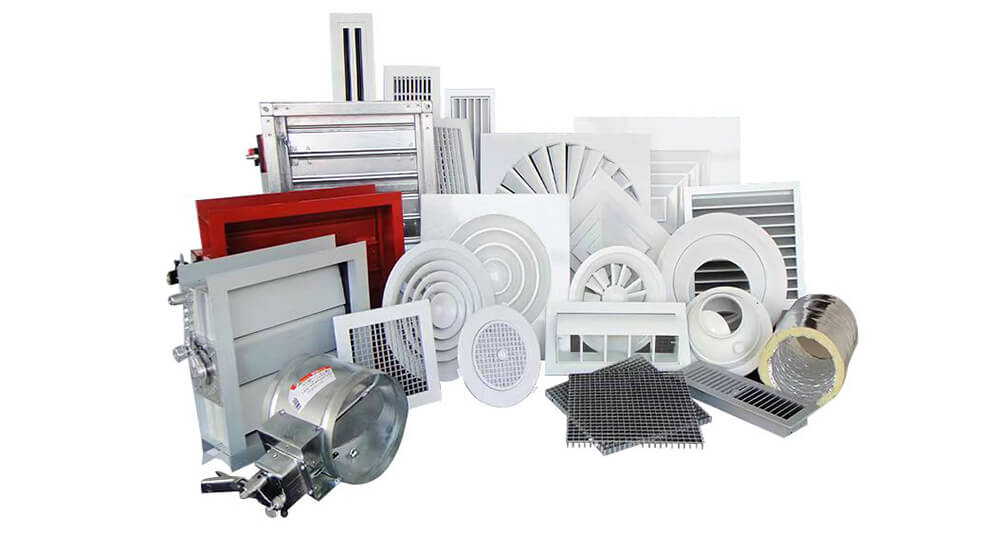
Conclusion
Indoor air quality (IAQ) is a paramount concern for building occupants and facility managers alike. The selection and proper maintenance of diffusers in your HVAC system play a pivotal role in ensuring that occupants breathe cleaner, healthier air. In this comprehensive guide, we have explored the various facets of diffusers and their contribution to IAQ enhancement.
A. Traditional vs. Advanced Diffusers
Evolution in IAQ Management
- Traditional diffusers have long been trusted for their ability to distribute conditioned air evenly throughout indoor spaces.
- The emergence of advanced diffuser technologies, such as HEPA filtration, UV germicidal, and smart diffusers, has ushered in a new era of IAQ management.
B. Key Considerations
Making Informed Choices
- When choosing diffusers, consider factors like airflow patterns, material selection, air exchange rate, noise control, and compatibility with your HVAC system.
- Leverage advanced technologies like HEPA filtration, UV germicidal, and IoT integration to further optimize IAQ.
C. Maintenance and Cleaning
Preserving IAQ Benefits
- Regular inspection, cleaning, and filter replacement are essential to ensure diffusers continue to contribute positively to IAQ.
- Professional maintenance and air quality monitoring help keep your IAQ management on track.
D. Benefits of Advanced Technologies
Elevating IAQ Standards
- Advanced diffuser technologies, including HEPA filtration, UV germicidal, and smart diffusers, offer enhanced particle removal, pathogen control, and intelligent IAQ management.
- IoT integration, air disinfection technologies, and personalized comfort diffusers further elevate IAQ standards.
E. Commitment to Cleaner Air
A Healthier Indoor Environment
- By embracing advanced diffuser technologies and implementing proper maintenance practices, you can create a healthier indoor environment for occupants.
- Cleaner air not only promotes well-being but also contributes to improved productivity, comfort, and overall quality of life.
In conclusion, the selection and maintenance of diffusers are integral to achieving and maintaining high IAQ standards. Embracing advanced diffuser technologies empowers you to go beyond conventional IAQ management, providing occupants with the gift of cleaner, healthier air. As we continue to prioritize indoor health and well-being, making informed choices about diffusers remains a vital step in ensuring that every breath taken indoors is a breath of fresh and clean air.
FAQs – Enhancing Indoor Air Quality with the Right Diffusers
A. How Do Diffusers Contribute to IAQ Improvement?
Enhancing Air Distribution
Diffusers are essential components of heating, ventilation, and air conditioning (HVAC) systems. They contribute to IAQ improvement by:
- Even Air Distribution: Diffusers ensure that conditioned air is evenly distributed throughout indoor spaces, preventing the formation of hot or cold spots and maintaining uniform IAQ.
- Particulate Matter Control: Some diffusers are equipped with filters that can trap airborne particles, including dust, allergens, and contaminants, thus contributing to cleaner air.
- Pathogen Control: Advanced diffuser technologies, such as UV germicidal diffusers, help inactivate harmful pathogens, reducing the risk of infections.
B. Are Advanced Diffuser Technologies Worth the Investment?
Enhancing IAQ Significantly
- HEPA Filtration Diffusers: These diffusers with HEPA filters are worth considering if IAQ is a top priority. They are highly effective at removing fine particles and allergens.
- UV Germicidal Diffusers: For spaces where pathogen control is essential, such as healthcare settings, UV germicidal diffusers can be invaluable in reducing infection risks.
- Smart Diffusers: If you seek an intelligent approach to IAQ management with energy efficiency in mind, smart diffusers offer a worthwhile investment.
C. How Often Should I Clean and Maintain Diffusers?
Preserving IAQ Benefits
- Regular Cleaning: Basic cleaning of diffusers should be done regularly to prevent dust and debris buildup. The frequency may vary depending on the environment.
- Filter Replacement: If your diffusers have filters, follow the manufacturer’s recommendations for replacement or cleaning schedules.
- Professional Maintenance: Periodic professional maintenance ensures that diffusers are functioning optimally. Consider scheduling maintenance at least once a year.
D. Can I Install Diffusers Myself, or Should I Hire a Professional?
Seeking Expertise for Optimal Results
- DIY Installation: While some individuals may attempt DIY installations, it is advisable to hire a qualified HVAC professional. Professionals have the expertise to assess your space and HVAC system, ensuring proper diffuser placement and airflow balancing.
- Safety and Performance: Professional installation not only guarantees safety but also optimal diffuser performance, which is crucial for IAQ enhancement.
E. What IAQ Benefits Can I Expect from Advanced Diffuser Technologies?
Elevating IAQ Standards
- HEPA Filtration: Advanced diffusers with HEPA filters can significantly reduce airborne allergens, particulate matter, and pollutants, promoting a healthier indoor environment.
- UV Germicidal: UV germicidal diffusers contribute to pathogen control, making them ideal for spaces where infection transmission is a concern.
- Smart Diffusers: Smart diffusers offer real-time IAQ monitoring and automated adjustments, ensuring optimal conditions and energy efficiency.
- Air Disinfection Technologies: Diffusers with air disinfection technologies, such as photocatalytic oxidation (PCO), can help neutralize odors, VOCs, and contaminants, enhancing IAQ.
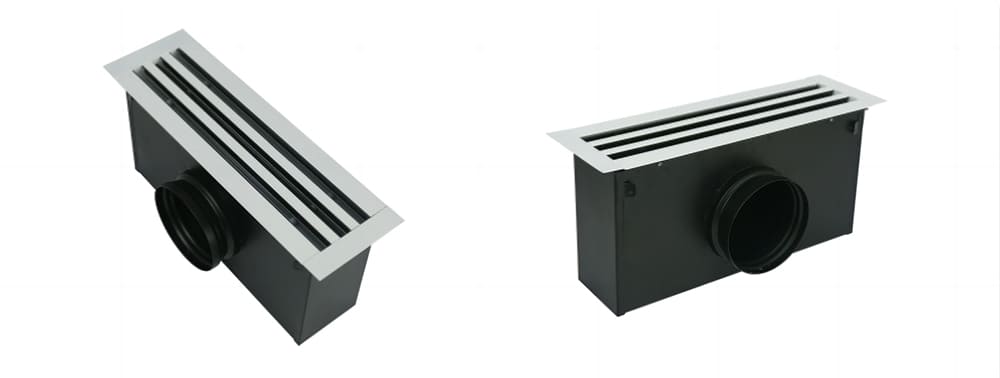
If you want to know more, please click below:
- Grilles, Registers & Diffusers – The Ultimate Guide
- HVAC Linear Slot Diffusers – The Ultimate Guide
- HVAC Egg Crate Diffuser – The Ultimate Guide
- HVAC Jet Nozzle Diffuser – The Ultimate Guide
- HVAC Linear Bar Grilles – The Ultimate Guide
- HVAC Air Swirl Diffusers – The Ultimate Guide
- HVAC Round Ceiling Diffusers – The Ultimate Guide
- Round Ceiling Diffusers – The Ultimate Guide
- Exhaust Air Louver – The Ultimate Guide
- HVAC Registers – The Ultimate Guide

